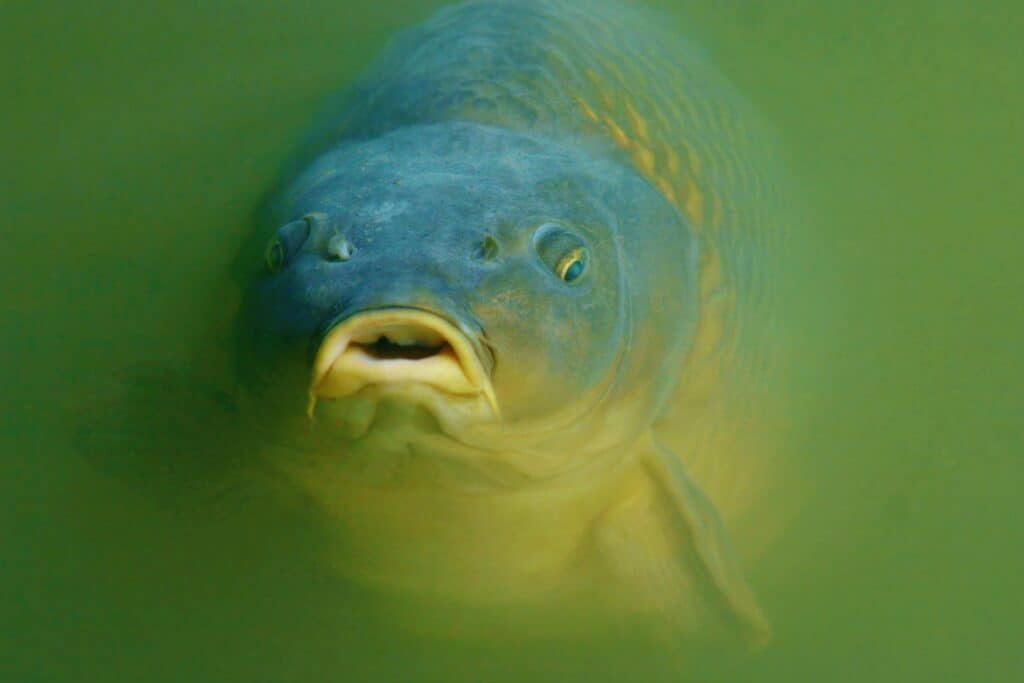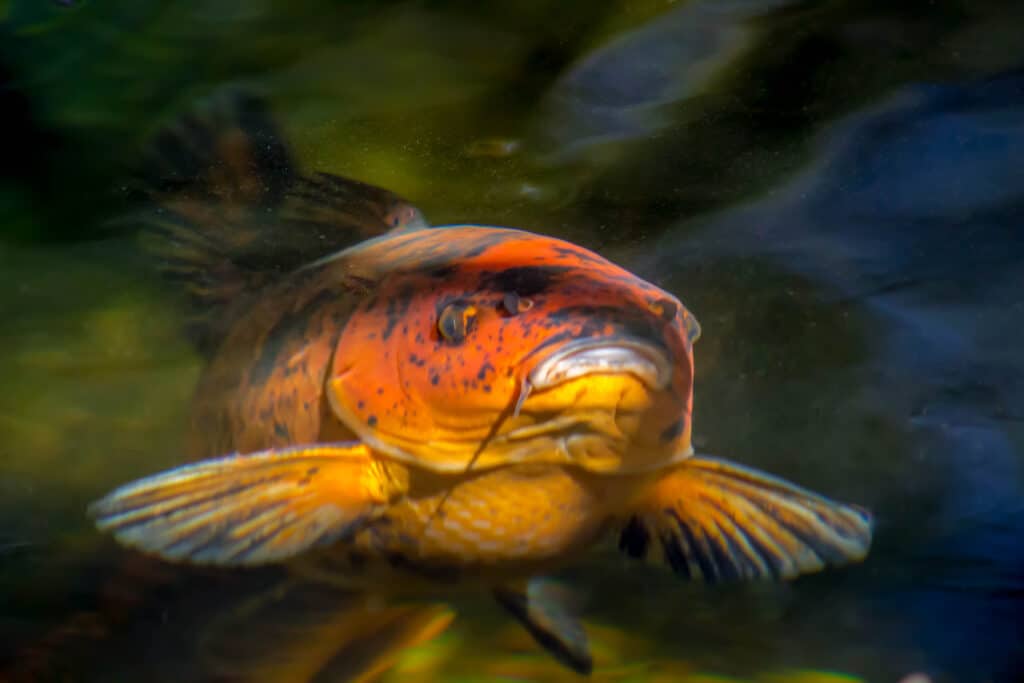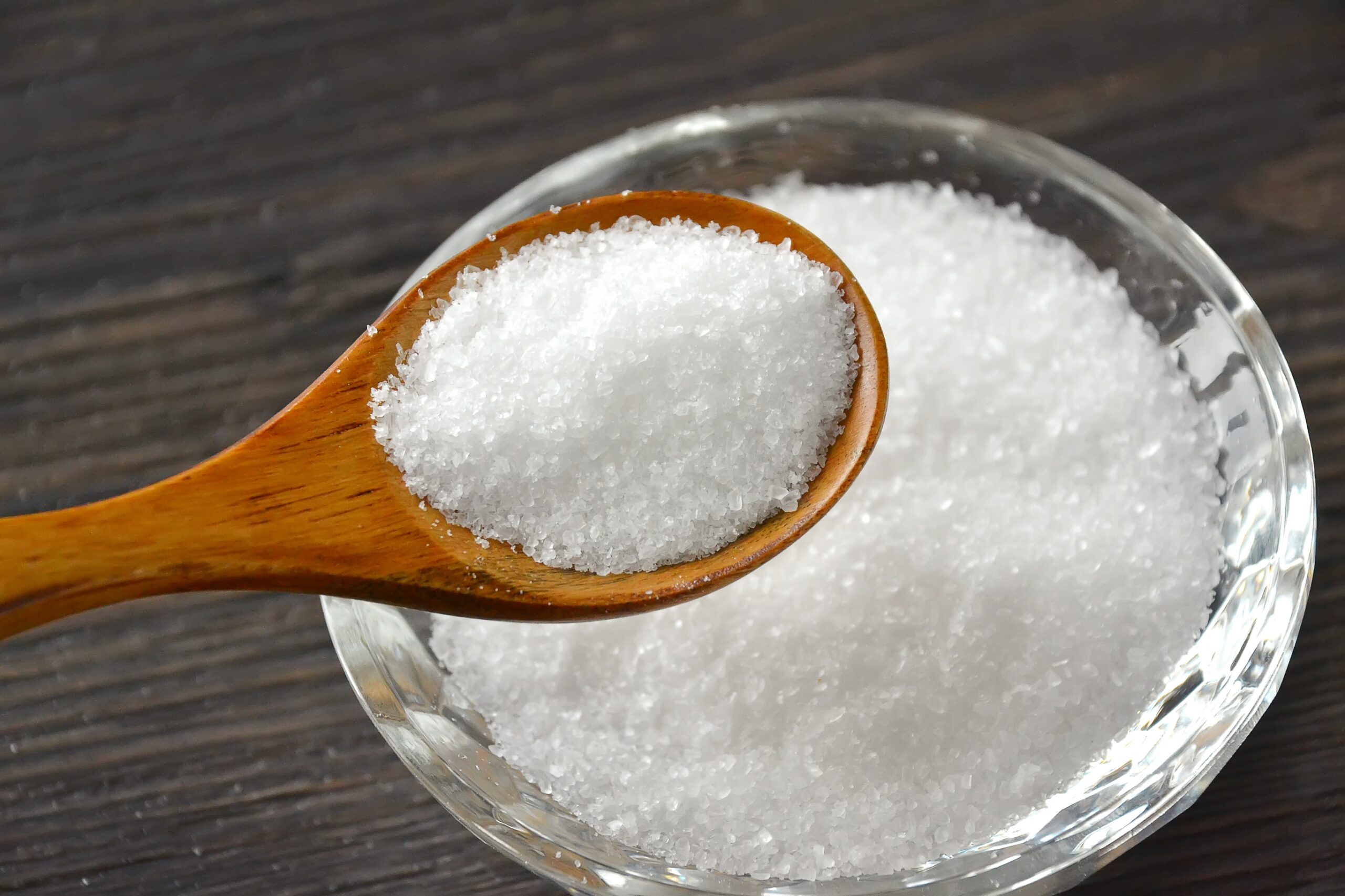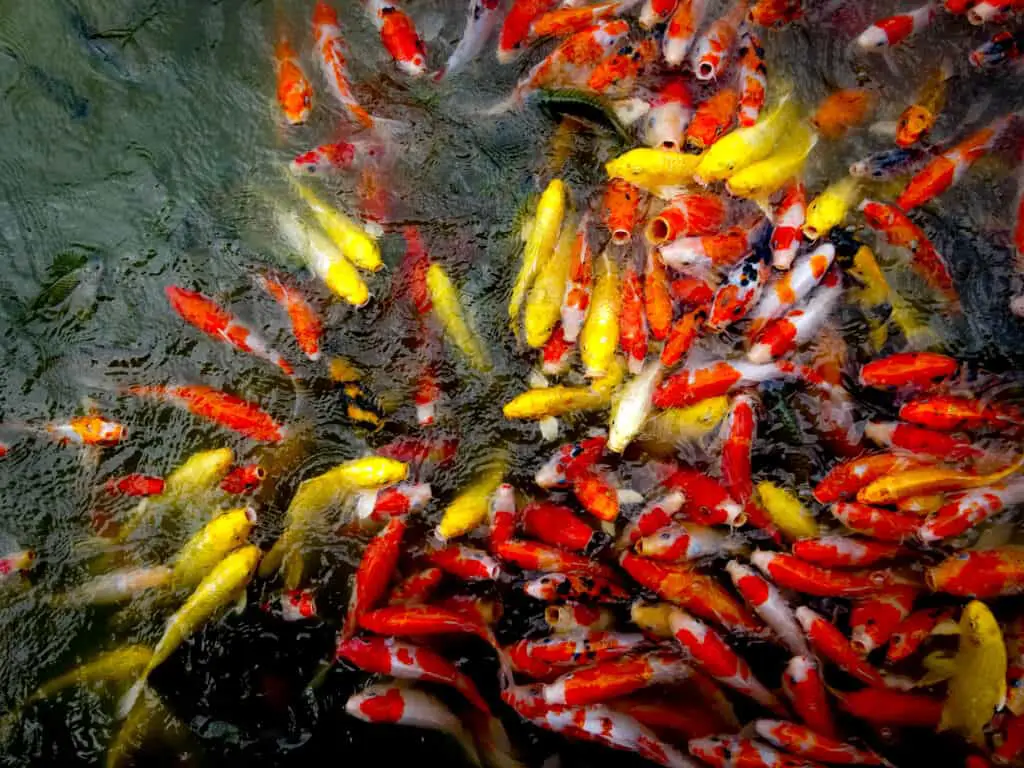
Most people enjoy koi ponds for the tranquility and peace they find in them. The medley of colors that koi fish come in delights the eyes, and their symbolism of strength, prosperity, good fortune, and perseverance in the face of adversity energizes the soul.
There are several reasons why your koi fish could be bloated, but not all are fatal to the fish. Your koi bloating can be as simple as egg-binding, constipation, or obesity, often mistaken for tumors or pinecones disease that is almost always fatal.
Water is essential in keeping your koi healthy and safe from illness. Unbalanced water will have rapid and devastating effects on your koi living and breathing in the pond. Knowing your koi’s habits and behavior will warn you of any threats lurking in the water that would cause harm to your fish.
Pro Tip: If you’re tired of wasting money and making costly mistakes on the koi-keeping hobby or are thinking about buying koi fish but don’t know where to start, I strongly suggest you check out this ebook. I recently read this ebook, and it contains SO much useful information, such as:
- 3 proven steps to identify koi fish diseases
- WARNING: 3 things you should NEVER do when it comes to caring for koi
- When to seek professional help when it comes to looking after your koi
5 Reasons Why Your Koi Fish Is Bloated
Some reasons why your koi is bloated may be explainable and harmless to your fish. However, there are some signs of bloating that can be harmful to your fish, and by the time they are visible, it is unfortunately already too late for them to make a full recovery.
1. Your Female Koi Fish Is Egg-Bound

Female koi fish will begin spawning when conditions are optimal, and the water warms up after winter. Egg-binding occurs in female koi fish when they produce eggs. However, in some younger females, when their ovaries do not develop enough to release the eggs, they will start to build up in the ovaries resulting in egg-binding or impaction.
Egg-binding causes the female to bloat and requires the males to forcefully bump into the female’s side to release the eggs. Unchecked, this can be fatal to your female koi.
As most of your female fish will start to spawn, you will see several fish with bloated bellies. This group bloating is a great way to know that it is not generalized to one fish, so the chances of your fish being sick is very low.
2. Your Koi Fish Are Constipated
Constipation in fish is shown by bloating and a production of stringy feces that hangs to the fish. Healthy fish feces will fall off immediately and dissolve in the water. So the right food is fundamental to the health of your fish. Buying quality food is essential to ensure your fish gets adequately looked after.
You may have to soak some pellets in water before giving them to the fish. If not, they tend to expand inside the fish’s intestines, creating an intestinal blockage.
If the blockage remains there, swelling of the abdomen becomes apparent and can lead to fluid leakage into the body cavity, allowing pathogenic bacteria to grow.
An excellent way to help with fish constipation is to feed the blanched peas to assist with fiber for improved digestion.
3. Your Koi Fish Has A Tumor
Just like people, fish can also get cancer and tumors. Most fish get tumors due to genetic predisposition. Some get caused due to viral infections. Koi fish usually get tumors of the reproductive organs, and this causes the abdomen to swell or look bloated.
Unfortunately, it is often too late to remedy the problem when cancer or tumors are detected, and the fish will die.
4. Your Koi Fish Is Obese

Sometimes we want to grow our fish to their full potential, so we give them excessive amounts of energy-rich food, and sometimes is just plain overfeeding by throwing handfuls of food into the water.
Rich protein foods and an excess of food result in fat deposited around the intestinal organs and gut, giving the fish an appearance of being bloated.
Overfeeding is easily remedied by feeding them only what they can enthusiastically eat within a minute or reducing the food’s protein content when they go into the winter months.
5. Your Koi Fish Has Pinecone Disease
Pinecone disease, also known as bloating or dropsy, shows signs of bloating and the lifting of scales. Scales sometimes lift so much due to the excessive bloating that they give the fish the look of a pinecone.
Dropsy occurs when the fish’s immune system weakens. Several conditions can cause the immune system to weaken, and chances are if one fish has low immunity, several others will also have a weak immune system.
Due to the weakened immune system, bacteria take hold of the fish and cause fluid buildup in the belly. This can lead to damaged fish organs that will ultimately cause death if not spotted quickly.
Is Dropsy In Koi Contagious?
Dropsy in fish is not contagious to other fish in the tank. The problem is the bacteria that infected the koi is present in the water the koi live in, and the numbers have become high enough to get past your koi’s natural immunity. So the chances are that the bacteria will infect other fish in the tank.
Regardless that dropsy is not contagious, I still recommend quarantining your sick fish, making caring for them more manageable, and medicine administering more effective.
How To Treat Dropsy
Dropsy is more of a bacterial infection resulting from more serious underlying health issues that are hard to detect initially. Unfortunately, fish that have developed dropsy has a high death rate as it is usually an end-stage bacterial infection.
This bacterial infection attacks the internal organs of the weakened koi, such as the liver and kidneys, before they shut down.
There is rarely a cure for dropsy, as underlying illnesses causing this has not yet been detected. However, a few remedies can help your koi and perhaps even save it.
If your koi fish is not getting the correct nutrients, its system cannot work correctly. So if your fish is not getting enough food or the incorrect food, it can cause the koi to become stressed and weaken its immune system inviting bacteria and parasites into an otherwise healthy fish.
Add Salt To The Water

Adding salt to the water will help cleanse the wounds between the exuding scales. It will stop the infection from growing any further and prevent any new bacteria from growing and further weakening the koi fish.
Adding salt is best done when your koi is in its own tank or placed in a quarantine tank as there is less water to treat. The ideal volume of course salt to add is one tablespoon per gallon of water. Changing the water every couple of weeks ensures no new bacteria starts to grow in the tank.
Treating Water With Antibacterial Medicine
Several factors can cause dropsy in your koi fish. Some of the most common factors can be parasites, overstocking your pond, improper diet, or more severe illnesses such as tumors.
Bacteria is always around your fish but only poses a threat when your koi’s immune system is low, which can be caused by underlying conditions that have not yet been diagnosed.
Treating water with antibacterial medicine is one of the fastest ways available. The medication stops the progress of infection in the koi’s internal organs. It will also treat any infections between the koi fish’s scales.
Don’t Overstock Your Koi Pond


Overcrowding your tank or pond can invite many illnesses that have dropsy as a symptom. In addition, overcrowding can cause your koi stress because there is not enough food, they get bullied by other koi fish over food, or they have not adequately adjusted to the new environment.
An overstocked pond increases the breeding rate of bacteria like Pseudomonas and Aeromonas that attack koi fish when stressed or weakened immune systems.
How Do You Quarantine A Sick Koi Fish?
A quarantine tank has a smaller capacity of water that can be tailored to meet the needs of your sick koi fish. For example, you can raise the temperature of the water to help the body fight the infection and add aquarium salt as a general water tonic.
Quarantine tanks usually use sponge filters or a power filter without activated carbon, which will typically remove the medicine from the water.
Healthy fish are prone to picking on sick fish, which will cause more stress for them and will not do their healing process any favor, so moving them to a quarantine tank as soon as possible will be best for your fish for a chance to rest and recover from his illness.
Fill a plastic bag with the tank’s water and gently scoop your sick fish with your net, placing it in the plastic bag. Place the sealed bag with the fish and allow it to float in the quarantine tank for 15 min while it acclimatizes to the water temperature before removing it from the bag.
How To Set Up A Koi Fish Quarantine Tank
It is always a good idea to have a quarantine tank in case of sickly fish or when bringing new fish into the environment.
Materials needed for a quarantine tank.
- Clear plastic tub or aquarium with a lid
- Low flow aquarium filter, like a sponge filter.
- Thermometer and aquarium heater
- A few decorations to allow the fish to hide
- Water conditioner
- Quarantine medications
Fill the quarantine tank with water and add your water conditioner. You can also mark the water level on your tank to make water changes and medicine dosages easier.
Do not use gravel in a quarantine tank. This will help make the weekly water changes after you treat the sick fish more manageable, and you can easily observe the fish waste.
Install a thermometer and heater to control the temperature of the tank. The ideal tank temperature should be between 68-75°F. If the water is cold, the koi’s system will slow down, and its body will not be able to fight the infection properly.
Keep your fish in quarantine for 4-6 weeks after the last symptoms have been observed.
Conclusion
Dropsy is the symptom that a koi will show to an underlying condition. Not overstocking your pond and knowing your koi fish behavior can help you pick up on your tank or pond problems. In addition, setting up a quarantine tank can prevent any further spread of the bacteria that are infecting the fish to spread and contaminating your pond.
References
https://www.ehow.co.uk/how_8234423_eggbound-koi.html
https://be.chewy.com/dreaded-dropsy/
https://be.chewy.com/aquarium-fish-constipation/

